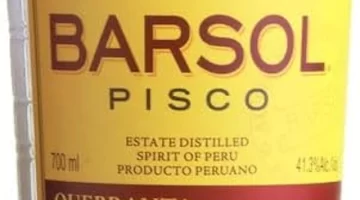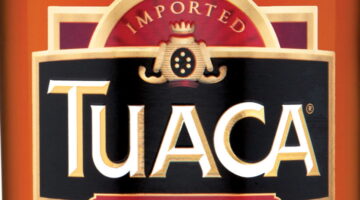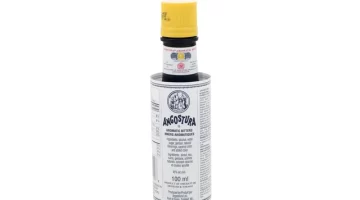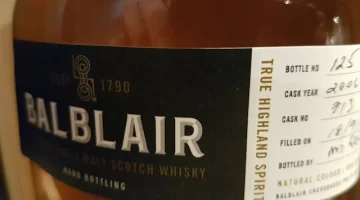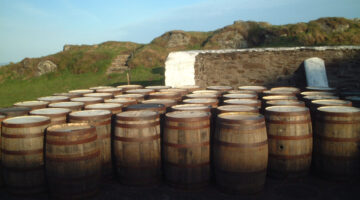Buying Japanese Gins in the UK
There are some amazing Japanese gins around now and this is a review of three of the best and how to buy them if you’re not in Japan.
I recently posted a press release about Where to Buy Japanese Gin, and the good news is that I was recently sent samples of three of the gins, so I could find out for myself just what’s special and different about Japanese gins. And they are special. Like a lot of Japanese items, they are subtle and under-stated, aiming for a quiet perfection.
Buying Japanese Gins in the UK: Nikka Coffey Gin
My wife and I tried the gins on different nights, as I like to get a second opinion. First one out of the bottle was Nikka Coffey Gin. The nose was very delicate. Was this even a gin? Where’s the heavy hit of juniper? It’s there, obviously, or it wouldn’t be gin, but it’s way back in the mix. The predominant note was citrus, with me thinking lemon but my wife – who has a very good sense of smell – wasn’t so sure she could place it.
I also thought it seemed strong, and gave a wonderfully full and smooth after-taste. My wife disagreed and thought it was a normal strength gin. I checked later, as there was only a name on our tasting sample, and Nikka Coffey Gin is a hefty 47% ABV, so brownie points to me on that.
However, my wife was right on the citrus, and it’s hardly surprising she couldn’t place it. It wasn’t lemon but yuzu, a lemon-like fruit found throughout Japan, China and Korea. To eat it is apparently super-sour and super-tart, but it does impart a great flavour to food and drink. It certainly did to this gin. Another of the botanicals is sansho, or Japanese pepper, whose spiciness is again very subtle but blends and balances the yuzu citrus taste.
The samples were too small for us to be able to attempt even a G&T, let alone a cocktail, but even though this makes a fabulous sipping gin I can imagine bartenders using its strength and its subtlety to create cocktails with a boozy punch.
Buying Japanese Gins in the UK: Roku Gin
Our next Japanese gin sample was Roku, which you may have thought was a TV streaming device but roku is the number six in Japanese. The gin uses six traditional Japanese gin botanicals alongside others more familiar to us. They include Yuzu peel and the sansho pepper again, along with sakura flower (cherry blossom), sakura leaf, sencha tea and gyokuro tea (both types of green tea).
The other botanicals are juniper berry, coriander seeds, angelica root, angelica seed, cardamom seed, cinnamon, bitter orange peel and lemon peel. Although there’s a lot of flavours going into this gin, it remains a subtle and aromatic gin, with less citrus and more peppery spice than the Nikka Coffey Gin. At 43% ABV there’s also less alcohol but it’s still a stronger-than-average robust gin. The cinnamon is detectable, and my wife got hints of fennel or anise, even though there’s none in there.
It was certainly the kind of gin you could go on sipping and talking about for a long time. It’s made by the Suntory company in Osaka, and as they’ve been making gin since 1936, they should know what they’re doing!
Buying Roku in the UK is now a whole lot easier!
Buying Roku in the UK is now a whole lot easier!
Buying Japanese Gins in the UK: Ki No Bi Gin
This is nothing to do with Star Wars, the name being Japanese for The Beauty of the Seasons – a lovely name for a gin. This one’s from the Kyoto Distillery, and it’s the first Japanese gin to be made in that city.
Ki No Bi also uses yuzu and sansho, and those flavours are soon going to become as familiar to western palates as they are in the east. Other Japanese botanicals include hinoki wood chips (Japanese cypress), bamboo and gyokuro tea. The base is a rice spirit, and the water is from the sake-brewing district of Fushimi, where they have exacting standards.
What’s interesting is that the company separates its botanicals into six distinct groups (see the chart).
Each group is then distilled individually, and then blended to get the flavour profile they want. The result is bottled at 45.7%, so another gin that’s stronger than the typical western gin.
The tasting notes on the website wax lyrical about Ki No Bi:
- As clear as the air in the sacred mountains of Kyoto.
- A fresh aroma of yuzu, and a thread of sansho that lingers like a morning mist in a bamboo forest.
My own tasting notes are pretty mundane compared to that! This is the most traditional of the three gins I sampled, in that the juniper is more prominent – although not as much as in a typical western gin. The Ki No Bi retains the refreshing citrus aroma and taste, and also a slight peppery tang on the tongue. It’s strong in alcohol but light and delicate in taste, as with all these Japanese gins. They are definitely gins with a difference.
Japanese Gin Cocktail Recipes
There are some cocktail recipes here for the Ki No Bi Japanese gin.





